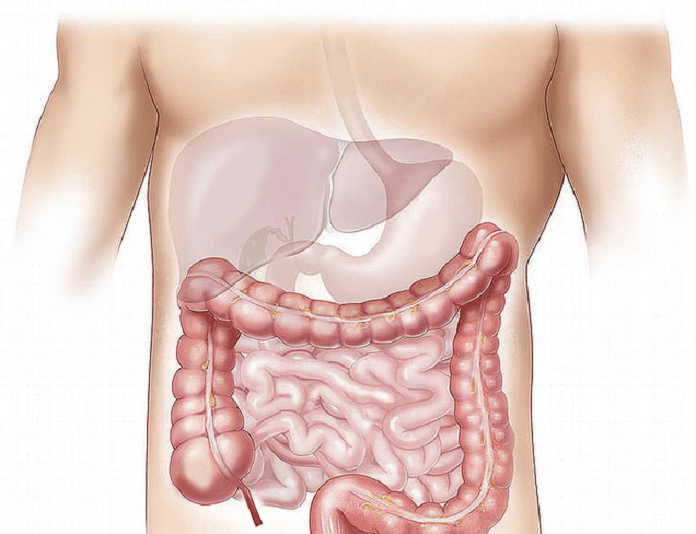New research led by researchers at the University of Limerick and a team from University Hospital Limerick in Ireland explored the link between Crohn’s disease and fatty tissue around the intestine.
Crohn’s disease is a chronic inflammatory bowel condition that can occur in different areas of the digestive tract.
Several factors play a role in the development of Crohn’s, but the exact cause remains unknown.
The study, published in the journal Scientific Reports, suggests that Crohn’s disease may be a fatty intestine condition.
The body composition of 30 patients, 13 males and 17 females aged 20 to 73 years, recruited from the patient records at the University of Limerick Hospital, was measured using dual-energy C-ray absorptiometry (DEXA). DEXA provides a 3-component model of body composition by measuring fat, lean body mass, and bone. Participants were classified as either in remission or relapse.
Their dietary records were completed, and physical activity was monitored.
Irrespective of relapse or remission, participants with Crohn’s disease incorporated fat into their bodies in a way different from a large representative healthy general population sample. Participants with Crohn’s exhibited elevated gynoid fat, fat around the hips and thighs, and reduced android fat, fat around the waist.
No statistical difference was found between relapsing or remitting Crohn’s disease participants, but a considerable difference was found in regional adiposity between Crohn’s patients and the general population.
Participants with Crohn’s disease exhibit preferential deposition of fat in the hips and upper thighs rather than the abdomen, suggesting a tentative link between regional adiposity and Crohn’s as a non-alcoholic fatty intestine condition. The researchers note that the body composition of these patients is complex and multifaceted.
The duration and stage of the disease correlate with elevated adiposity as well as the medications used for treatment, which alter body composition and are known to result in fat mass gain.
Despite the small study cohort, researchers suggest that the association between Crohn’s disease and fatty intestinal tissue offers a new path to investigate this disease, but additional, large-scale studies are required.
Reference
Dowling, L., Jakeman, P., Norton, C. et al. Adults with Crohn’s disease exhibit elevated gynoid fat and reduced android fat irrespective of disease relapse or remission. Sci Rep 11, 19258 (2021). https://doi.org/10.1038/s41598-021-98798-9
Image by Elionas2 from Pixabay



